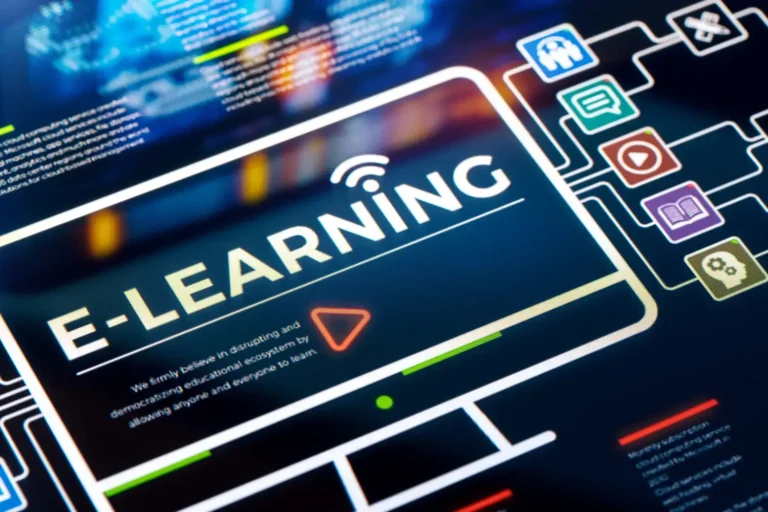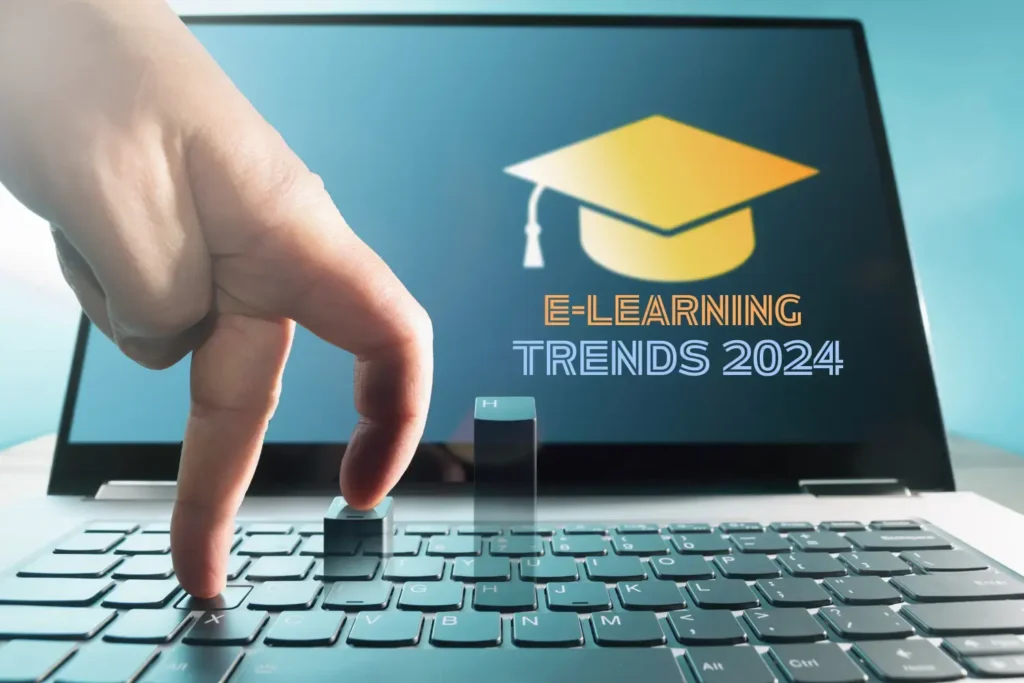Digital technologies are becoming increasingly important in the evolution of education. By 2024, eLearning will be an alternative to traditional education systems and an integral part of them. This change is driven by eLearning accessibility, flexibility, and innovative potential, which makes it vital for educators, students, and professionals to remain updated. This blog post explores ten significant e-Learning trends. Educators must understand these trends to stay competitive and improve their educational strategies. Staying informed about these trends will help educators prepare students for the digital future and allow professionals to adapt to the changing demands of the industry
Trend 1: Artificial Intelligence (AI) in eLearning
AI in eLearning is about creating a more personalized, responsive, and effective educational experience. It allows for real-time adjustments in teaching methods and materials, ensuring every learner receives the support they need to succeed.
AI in Education: Personalizing Learning
Artificial Intelligence is revolutionizing elearning and transforming the way educational content is delivered. AI-powered platforms can analyze how each student interacts and personalize the learning experience. The content, challenges, and pace of the course are adjusted to meet the individual needs of every learner.
Customized Learning Paths
Enhanced Engagement and Better Results
Make Education More Effective
AI in eLearning not only automates the learning process but also enhances it to make it more responsive to each individual’s needs. This technology offers a more efficient and effective way to learn by adapting continuously to each learner’s performance and providing feedback as well as resources that are specific to their needs. This dynamic approach makes education more meaningful for students.
Trend 2: Gamification and Interactive Learning
Gamification: Making Learning Fun
Gamification incorporates game elements, such as badges, leaderboards, and rewards, into the learning process. This method encourages students to participate actively, which makes it more engaging. Students are motivated by these fun elements, just as gamers are when they reach new game levels or earn points. This makes learning a rewarding and competitive experience. It is not only educational but also fun.
Interactive Learning: Hands-On Education
Gamification is enhanced by interactive elearning, which makes the educational process more engaging. Students are not passively reading or listening; they actively engage in the content by clicking, dragging objects on the screen, and participating in virtual scenarios. They might, for example, simulate a scientific procedure or solve puzzles relating to mathematical concepts. This helps students to remember the information better because they are actively involved
Increase Engagement and Retention
Encouraging Active Participation
Education can be more enjoyable and accessible.
Trend 3: Mobile Learning and Microlearning
Mobile Learning: Learn on the Move
Microlearning: A Quick and Efficient Method of Education
The perfect match for today's fast-paced world
Enhancing Learning Through Technologies
Catering to Modern Preferences

Trend 4: Virtual Reality (VR) and Augmented Reality (AR)
Virtual Reality and Augmented Reality (VR) and (AR) can enhance your education experience by creating immersive and real-time environments. VR fully immerses users into an immersive digital world, whereas AR overlays digital data over reality.
Creating Immersive Learning Environments
VR and AR are revolutionizing the method by which eLearning is taught by providing students with immersive experiences based on real-world situations. They allow students to play around and interact in 3D environments. This is particularly useful in fields that require hands-on training, like engineering, medicine, and science.
Experiential Learning Through VR and AR
They allow students to experience learning in which they can test and apply their skills in safe, controlled environments. For instance, medical students can conduct virtual surgeries or study their body’s anatomy in 3D and gain valuable hands-on knowledge without the dangers associated with real-world procedures
Benefits in Complex Fields
Enhancing Engagement and Retention
Trend 5: Adaptive Learning Technology
Adaptive learning technology adapts the instructional content and the time at which it’s provided to meet the specific requirements of each student. This method uses sophisticated technology to assess how well a learner absorbs information. eLearning then automatically alters the content’s difficulty and content to guarantee optimal learning performance—adaptive Learning Works.
Personalized Learning Paths:
Dynamic Content Adjustment:
Based on the analysis results, the adaptive system adjusts the learning material in real-time. If a student is having difficulty with an idea, the system will provide further resources or more straightforward explanations. If a student is doing well, the subject is more challenging to keep them focused and learning effectively.
Enhanced Engagement and Efficiency:
Benefits of Adaptive Learning Technology
Maximized Learning Efficiency:
Improved Learning Outcomes:
Increased Learner Satisfaction:
Conclusion:
Contact us
Contact JA-Translation at contact@ja-translations.com with any inquiries. We look forward to assisting you with your software needs!

